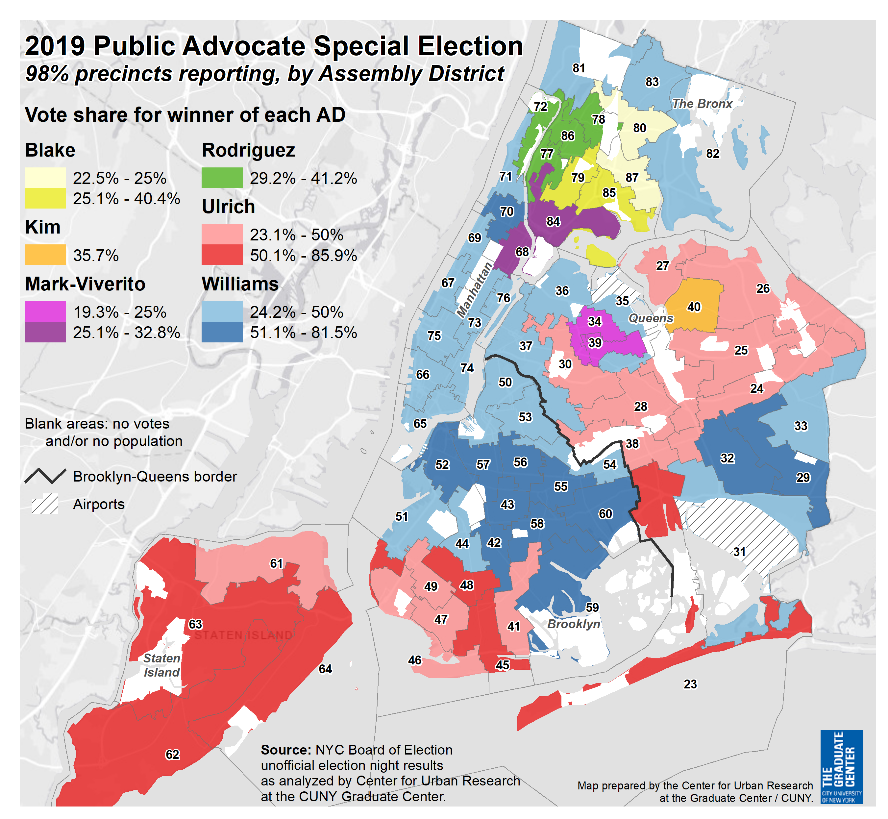Pied-à-Terre Tax Should Be Just The Start
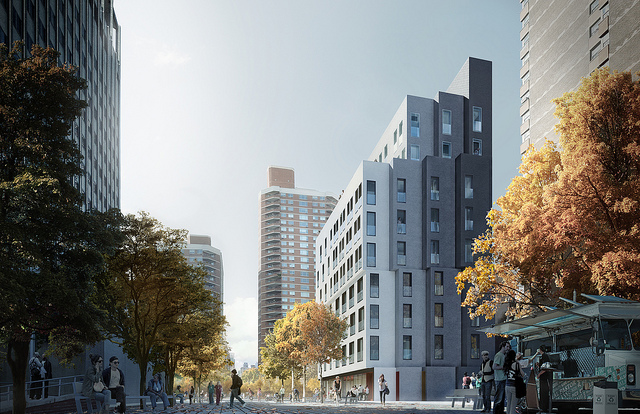
(image: mayor's office)
Governor Andrew Cuomo, Senate Leader Andrea Stewart-Cousins, and Assembly Speaker Carl Heastie have all signaled their support for funding the long overdue MTA overhaul with a pied-à-terre tax. Cuomo has said it’s the “only agreed-to new money” for the upcoming state budget. But the challenges facing struggling families in New York demand more than just a pied-à-terre tax. We need an entire reimagining of New York’s upside-down tax system.
There are over 75,000 apartments in New York City owned by people who don’t live there year-round. Some of these are second, third, or fourth homes. Earlier this year billionaire hedge-funder Ken Griffin made headlines for purchasing the most expensive home in the country: a $238 million penthouse overlooking Central Park. Griffin already owns multi-million-dollar properties in Chicago, Miami, and London.
The pied-à-terre tax, sponsored by Senator Brad Hoylman, would institute a surcharge on non-primary residences worth $5 million or more. The surcharge would start at 0.5% and rise to 4% for homes worth more than $25 million. For people like Griffin, it’s pocket change. State Budget Director Robert Mujica estimates the new tax would generate $9 billion in new revenue over the next decade.
New York’s billionaire class has been let off the hook by a regressive tax structure that puts the burden on working families in the form of higher sales and property taxes. These times call for us to have the courage to demand that the wealthiest New Yorkers pay their fair share. New York is already the most unequal state in the country, with the top 1% taking home 45 times more than the bottom 99%. The Trump tax scam has only made the problem worse, as billionaires are now benefiting from some of the lowest tax rates in decades.
Austerity measures, fueled by the false narrative that there just isn’t enough money to go around, have wreaked havoc on our communities. In cities like Rochester and Schenectady, half of all children live in poverty. A state as affluent as ours should not have young children going to sleep hungry or elderly people unable to afford their rent.
The entire tax system in New York is rigged to benefit the super wealthy. Taxing the rich shouldn’t be a last resort for our Governor and Legislature. New York needs a pied-à-terre tax, an expanded millionaires’ tax, the elimination of the carried interest loophole, and an end to the billion-dollar giveaways to giant corporations.
This restructuring of our tax system would allow for investments in our struggling communities. It would mean we could fully fund our public schools, repair our crumbling infrastructure, and expand access to affordable health care and child care.
Corporate-backed think tanks like the Empire Center will wave their arms and cry “tax flight,” but this has proven to be a myth. The people who move the most frequently are young people and low-income families seeking good-paying jobs and a better quality of life. And what will improve quality of life in New York and make young families want to live here? Quality public schools, affordable housing, and reliable transportation.
The self-imposed shortfalls and spending cuts continue to hurt our communities. The Governor needs to stop kowtowing to CEOs and big developers and insist that the people with the most contribute the most.
***
Jessica Wisneski is Co-Executive Director of Citizen Action of New York. Michael Kink is Executive Director of Strong Economy for All. On Twitter @jesswisneski & @citizenactionny.
***
Have an op-ed idea or submission for Gotham Gazette? Email This email address is being protected from spambots. You need JavaScript enabled to view it.
Proposal Would Subvert Efforts to Address Affordable Housing Crisis
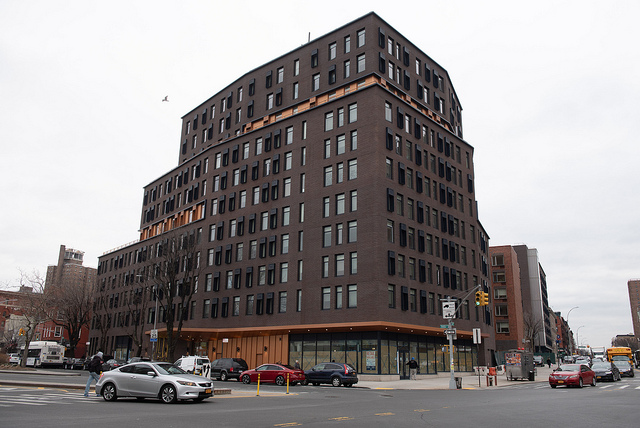
(photo: Michael Appleton/Mayoral Photography Office)
One of the greatest and most immediate challenges facing New York is a statewide affordable housing crisis that continues to affect millions of families. Elected officials must support and promote new legislation and policies that will help our state produce more affordable homes and, correspondingly, do no harm to much-needed housing efforts.
The reality today is that more than 3 million households across the state still pay more than 30 percent of their income on housing costs, which means they are “rent-burdened” and often struggle to afford housing and other necessities like health care and child care.
This crisis is what led Governor Cuomo and the Legislature to dedicate $2.5 billion to support an ambitious five-year statewide housing plan and preserve crucial low-income housing tax credits that were under threat by the federal government.
But our state’s ability to address the affordable housing crisis is now at risk of being undermined by new legislation that proposes to expand the definition of public work and the application of the prevailing wage mandate to private construction projects – including low-income housing developments – based on the public subsidies they rely upon to be built.
As an organization whose members deeply believe in supporting the needs of low- and middle-income New Yorkers, we also believe in good, fair wages for all workers. But the wide application of prevailing wage, which is far in excess of the median wage and can raise construction costs by 25 percent or more, is not actually a path to higher pay for construction workers. In fact, it is certainly a way to ensure there are fewer jobs, fewer new developments, and fewer affordable homes for New Yorkers.
This would be a step backward for New York, where construction costs are already the most expensive in the world, averaging $362 per square foot in New York City, according to Turner & Townsend’s 2018 report on international construction. The report also notes that those costs will only continue to rise and are expected to jump by another 3.5 percent over the next year. Other costs and regulatory burdens remain major obstacles all across the state.
Whether they live in Brooklyn or Buffalo, New Yorkers simply cannot afford to lose opportunities for new housing construction and the many good jobs that come with them. It is worth noting that the creation and preservation of affordable housing supported more than 300,000 total jobs throughout the state between 2011 and 2015.
The state Legislature now has an important choice to make. Rather than advancing well-intentioned but misguided legislation that would diminish new affordable homes and good jobs across the state, we hope lawmakers will fully consider these negative impacts before they proceed with imposing prevailing wages on the construction of affordable housing in New York.
The further that lawmakers explore this issue, the clearer it will become that it is unwise to hastily advance these proposals and risk undercutting New York State’s much-needed housing plan. And if they make the right choice, all New Yorkers will benefit.
***
Jolie Milstein is president and CEO of the New York State Association for Affordable Housing, a trade association that represents nearly 400 members responsible for the construction and preservation of affordable housing across the state.
***
Have an op-ed idea or submission for Gotham Gazette? Email This email address is being protected from spambots. You need JavaScript enabled to view it.
Tale of Two Transit Plans: Johnson’s Is Real, Cuomo’s Is Likely
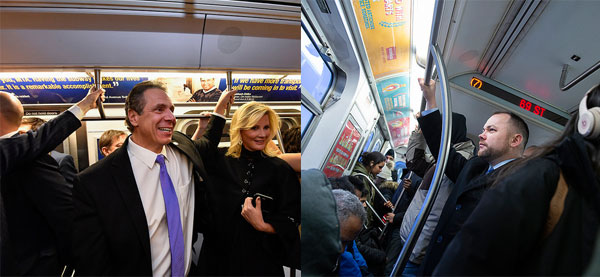
Gov. Cuomo (governor's office) & Speaker Johnson (William Alatriste/City Council)
On February 26, Governor Andrew Cuomo and Mayor Bill de Blasio released a 10-point plan to “transform and fund” the Metropolitan Transportation Authority (MTA). The vague, crisp proposals are designed to centralize splintered MTA operations to further State control, formally unify support for revenue-generating policies like congestion pricing, and establish external monitoring of the struggling authority, which runs the New York City subways and buses, as well as regional rail networks.
One week later, City Council Speaker Corey Johnson announced a transit plan of his own, several months in the making. The speaker’s 104-page white paper has a slew of ideas to reform governance, financing, accessibility, and surface-level transit.
The boldest proposal in Johnson’s very bold plan is the City take over subway and bus mass transit -- which it hasn’t managed since 1968 -- plus local bridges and tunnels, while leaving control of commuter rail, suburban buses, and capital projects to the MTA.
This would streamline transit accountability by making the mayor directly responsible for the subway and buses (like in London). Johnson also wants congestion pricing, whether the State passes it or the City enacts its own measure, and several tax hikes.
To be clear: neither plan has all the details. That’s the nature of politicians creating policy, and needing subject-specific experts to chime in. The difference is the Cuomo-de Blasio 10-point proposal lacks the basic necessities of a policy plan, whereas Johnson’s is a well-thought out series of policies, just without some next-level details.
It’s unclear the joint Cuomo-de Blasio plan, which needs approval from the state Legislature, will actually help alleviate deeper MTA problems with performance, operations funding, capital expansion, labor costs, or debt service. In his Signal Problems newsletter, journalist Aaron Gordon noted there’s a “fundamental misunderstanding” of different technological options for upgrading the signal system.
Johnson’s white paper glazes over politically-challenging aspects like labor costs that the Cuomo-de Blasio plan ignores entirely, and takes a radical stance on taxes generating permanent operations revenue. In response, Cuomo outright mocked Johnson’s proposal, while de Blasio dismissed it as an impossibility before the April 1 state budget deadline.
Plenty in the transit world is already being debated, and that fast-approaching state budget deadline brings a Legislature more focused on fiscal policy than urban planning into the conversation. Especially since all three leaders -- Cuomo, de Blasio, and Johnson -- agree congestion pricing needs to happen, the actual proposals are less significant than the policymaking tenor with which they’ve been proposed and discussed, and what the differences mean for governance of the city’s mass transit system.
Johnson’s plan is a substantive, comprehensive proposal, while Cuomo’s plan (I’ll call it Cuomo’s, because his stamp is on practically the entire thing) is dangerously short on details relative to what one should expect from a government leader impacting millions of people. Details are a precursor to meaningful dialogue about transit reform, and the rigor simply isn’t there in 10 bullet points. (Clearly, that’s not just a local problem.)
Cuomo’s team insists they’ll throw together enough details in the state budget. The governor often waits until the last hour to force budget changes, like when his team ushered in a congestion surcharge of $2.75 for rideshare vehicles and $2.50 for taxis last year.
Cuomo’s transit input isn’t necessarily a bad thing, but it’s a troubling indicator of dictatorial, politically-driven decision-making in transit, an excessively technical endeavor at its core.
It’s hard to trust the New York details will be as substantive as plans in Berlin, London, Paris, or Singapore, considering the simplicity of the toll shoved through last year’s state budget. A $2.75 surcharge on ride-share vehicles is the price of a city transit fare, while the $2.50 surcharge for taxis was simply less than the $2.75.
What accounts for the differences in rigor? Cuomo “expects” his plan to be approved behind closed doors in Albany, whereas Johnson is promoting transparency and accountability. Cuomo’s already in charge, Johnson wants the City to be.
The governor acts as if he can change practically anything atop the MTA without pushback. Maybe he’s onto something. Neither advocates and journalists outside government, nor MTA leadership and legislators within government, have consistently scaled back Cuomo’s transit proposals, even those that overstep his bounds or are not economically sensible.
Consider the new L train tunnel repair plan: despite wild uncertainty in changing plans three years in the making at the last second, the MTA Board acted handcuffed in even exercising due diligence. Criticism simply didn’t manifest into meaningful resistance.
It’s less about dialogue, since the governor’s tactics don’t really invite public discourse or any semblance of democratic norms. Cuomo’s threatening a 30 percent fare hike should he not get his way with congestion pricing, and the governor’s response to Johnson’s plan was to withdraw the State’s $10 billion in funding should the City control the subway.
Effectively, it’s Cuomo’s way, or the highway. A plan this vague and politically-driven, yet still likely to pass given the governor’s power in changing the MTA and influencing the state budget process, can only exist in an accountability vacuum (a phrase I wrote in an earlier version of this article that Johnson used in his State of the City speech).
It’s clear the speaker’s 104-page plan takes governing, accountability, and rigor seriously. Johnson’s plan sets clear, quantifiable expectations for improvements, makes the mayor the subway’s political figurehead, reforms transit government boards, and specifically references a multitude of programs to expand. The spirit of Johnson’s white paper mirrors that of Berlin’s comprehensive proposal in late February to inject billions of euros into its already-heralded system.
However, it doesn’t mean Johnson’s proposal is the right one for New York. Former head of the MTA Richard Ravitch, who is credited for resurrecting the authority and its subways in the early 1980s, said of Johnson’s plan, “It’s a very thoughtful proposal, I just don’t agree with it.” Having the City take over mass transit is a massive undertaking, and the taxes he proposes may drive business out of the City, a delicate subject any time, especially post-Amazon.
That’s why the devil is in the details. Without knowing what Cuomo’s plan really entails, how can the MTA Board, State Legislature, City Council, journalists, and the commuting public decide what to make of the two plans side by side?
The tale of two plans is a stark reminder New York’s political landscape needs reforming, just as much as its transit system needs an overhaul. In essence, there’s only one real plan on the table: Johnson’s. Yet, the plan without plans—Cuomo’s—is what New Yorkers should expect to happen.
***
Tim Lazaroff is a freelance journalist specializing in transit.
***
Have an op-ed idea or submission for Gotham Gazette? Email This email address is being protected from spambots. You need JavaScript enabled to view it.
One Way to Keep Good, Middle-Class Jobs in New York

(photo: Wikimedia Commons)
Long gone are the days when a family could live comfortably with a minimum wage job. In 1968, a worker making the federal minimum wage could support a partner and a child above the poverty line. Today, you can’t even support yourself and a child on it. Even with the recent increase to the minimum wage, hitting $15 an hour in New York City, it’s impossible for families in many parts of the state to live on minimum wage.
Economic anxiety has unfortunately become the new norm. Traditionally, most families’ golden ticket out of poverty was a solidly middle-class job, like at a call center. Those jobs, however, are increasingly being lost to corporate greed.
Since 2006, over 40,000 call center jobs were lost in New York. Forty thousand.
That means 40,000 families have had to face the emotional and financial stress of losing a job. It’s not as though the need for call center jobs has decreased; the Bureau of Labor Statistics projects a 5% growth rate for customer service representative jobs between 2016 and 2026.
Unfortunately, there has been an upward trend of massive corporations looking to ship these jobs elsewhere so they can pay workers less and often find better tax incentives. Outsourcing work to other parts of the country or abroad has become a common corporate tactic to reduce costs. Middle class jobs are replaced with cheaper labor (often with subpar working conditions).
With the Trump administration’s tax cuts last year, outsourcing has become even more attractive to corporations, accelerating the process. The law rewards corporations with tax cuts and incentives for profits made overseas, with corporations paying as little as half or less of the corporate tax rate on profits earned abroad as they would here at home.
This is why I support the New York State Call Center Jobs Act, a bill that would finally prevent companies from being rewarded for outsourcing these good jobs elsewhere.
In January, AT&T announced it was closing a call center in Syracuse, eliminating 150 jobs. The workers in the call center had just two weeks to decide whether to accept a severance package or relocate.
Call center jobs are critical lifelines to sustain a robust middle class and it’s important we recognize that moving these jobs out of state has devastated families and communities across New York. We can no longer allow corporations to line their own pockets at the expense of hard-working New Yorkers.
This bill would help New York protect call center jobs at employers with 50 or more full-time or full-time equivalent employees. Employers would be required to notify the Public Service Commission if they intend to relocate at least 30% of call volume in a year. Those companies would lose all grants, loans, tax benefits, and state contracts, since our government should not be giving tax dollars to companies that are leaving the state. It would also ensure that all call center work related to state business is performed by New York companies.
This legislation passed last year in the Assembly and had considerable support in the Senate. Now that the Senate leadership has changed, we can and should get this done this year. I urge my fellow legislators to do what is right and protect New York’s middle class.
***
Senator Jessica Ramos represents State District 13, which includes the Queens neighborhoods of Corona, East Elmhurst, Elmhurst, Jackson Heights, and parts of Astoria and Woodside. On Twitter @JessicaRamos.
***
Have an op-ed idea or submission for Gotham Gazette? Email This email address is being protected from spambots. You need JavaScript enabled to view it.
Heading to Retrial, High-Profile Case Prompts Important Question for Queens DA Candidates
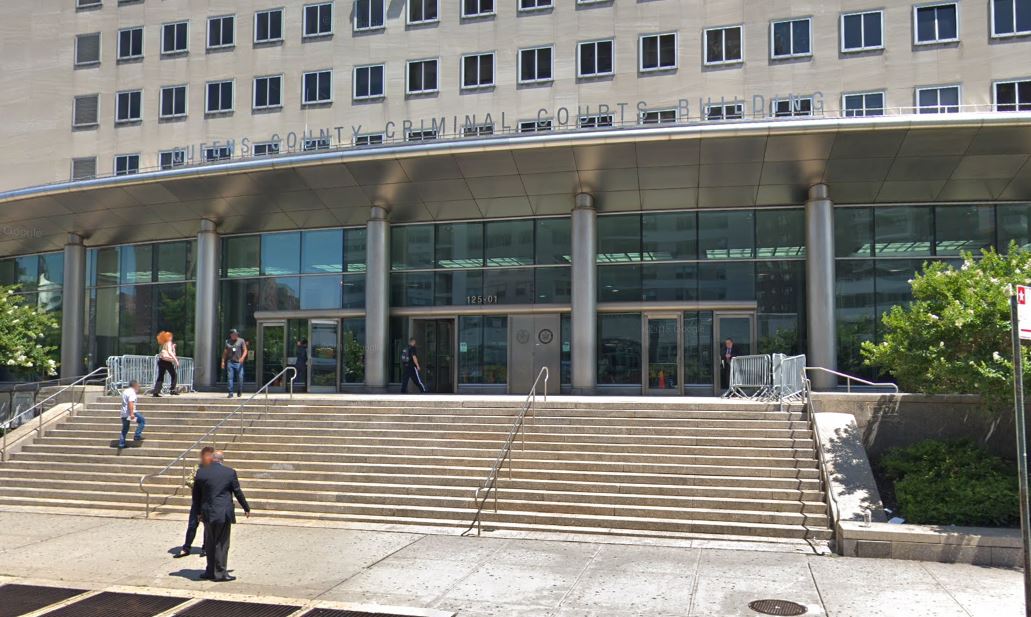
(photo: map data ©2019 Google)
As the Queens District Attorney race begins to take shape, the most controversial case the borough has seen in recent years will return to the headlines. Jury selection is slated to begin Tuesday in the retrial of Chanel Lewis for the 2016 murder of Howard Beach jogger Karina Vetrano.
A new set of jurors will thus consider the same evidence presented by prosecutors in the first trial. At least one crucial component of the prosecution’s case raises an important question for the seven candidates vying to replace outgoing Queens DA Richard Brown.
This past November, jurors deliberated for only 13 hours before a mistrial for Lewis was declared by Judge Michael Aloise, who was perceived to be sympathetic to the prosecution and Vetrano’s family. Foremost among the evidence from the trial that the jurors asked to review was the videotape of the confession that Lewis gave at the 107th Precinct in Flushing.
Lewis, then 20, was held overnight at the police station before giving his confession. According to his lead attorney, Robert Moeller of the Legal Aid Society, this was the first time that Lewis—who had attended a high school for students with learning disabilities—had ever spent the night away from home.
Around 6 a.m. on February 5, 2017, Lewis told a pair of detectives that he had committed the murder (although he adamantly denied sexually assaulting Vetrano). After speaking with detectives, a few hours later Lewis met with a pair of prosecutors from the Queens DA’s office. Lewis apparently thought that one of the ADA’s questioning him was his own defense lawyer.
Prior to giving the two statements, Lewis indeed had not yet met with counsel. And while the DA’s office under Brown readily accepted his confession prior to such a conference, it’s a matter of prosecutorial discretion whether to do so.
I thus posed the following question to Brown’s prospective successors: As DA, would you accept a videotaped confession in a serious felony case in which the defendant had not yet met with a defense attorney?
The only one of the seven candidates who did not respond was Greg Lasak, a former Queens Supreme Court judge and former prosecutor under Brown. Before retiring last summer to run for DA, Judge Lasak made initial evidentiary rulings in the case, including allowing Lewis’ confession.
Mina Malik, a prosecutor in Brown’s office from 1999-2014, did not commit to creating a new rule regarding which confessions she would accept. But she did say that “evidence deemed legally permissible may still undermine the public’s trust in the process, and it is important that a DA deeply understands all aspects of a case.”
Jose Nieves, a former Brooklyn prosecutor, views the issue as a matter of oversight. “As a general rule,” he says, “I’m going to make sure that when the NYPD takes statements, they should be overseen by ADAs trained to protect the rights of the accused.”
A public defender in Manhattan for the last seven years, Tiffany Cabán would treat the issue on a case-by-case basis. As DA, Cabán vows that she “will not accept videotaped confession where no lawyer was present under traumatizing circumstances.”
Queens Borough President Melinda Katz, meanwhile, holds a similar position. Katz says that “All confessions must be evaluated for the circumstances under which they were given, especially when defense counsel is not present."
The only one of the candidates to promise to create a blanket rule is Betty Lugo, a veteran civil lawyer. “I would not accept a videotaped confession in a serious felony case in which the defendant had not yet met with a defense attorney.” In Lugo’s view, the police “should have advised Lewis of his Miranda rights and waited for an attorney to be present before questioning him.”
Queens City Council Member Rory Lancman opted not to comment.
Steve Zeidman, director of the Criminal Defense Clinic at the CUNY School of Law, sees the issue as a matter of balancing the scales of justice. In Zeidman’s view, “a progressive DA would agree with Justices Marshall and Brennan (in Moran v. Burbine) who said there should be no effort to interrogate unless an attorney has first been provided.”
The next Queens DA indeed has the opportunity to turn the talk of equality into action. “After all,” as Zeidman reminds us, “a rich person already has a lawyer and can more readily invoke the right to counsel.”
***
Theodore Hamm is chair of journalism and new media studies at St. Joseph’s College in Brooklyn. On Twitter @HammerDaily.
***
Have an op-ed idea or submission for Gotham Gazette? Email This email address is being protected from spambots. You need JavaScript enabled to view it.
The Loft Law Bill: Inequity on Stilts
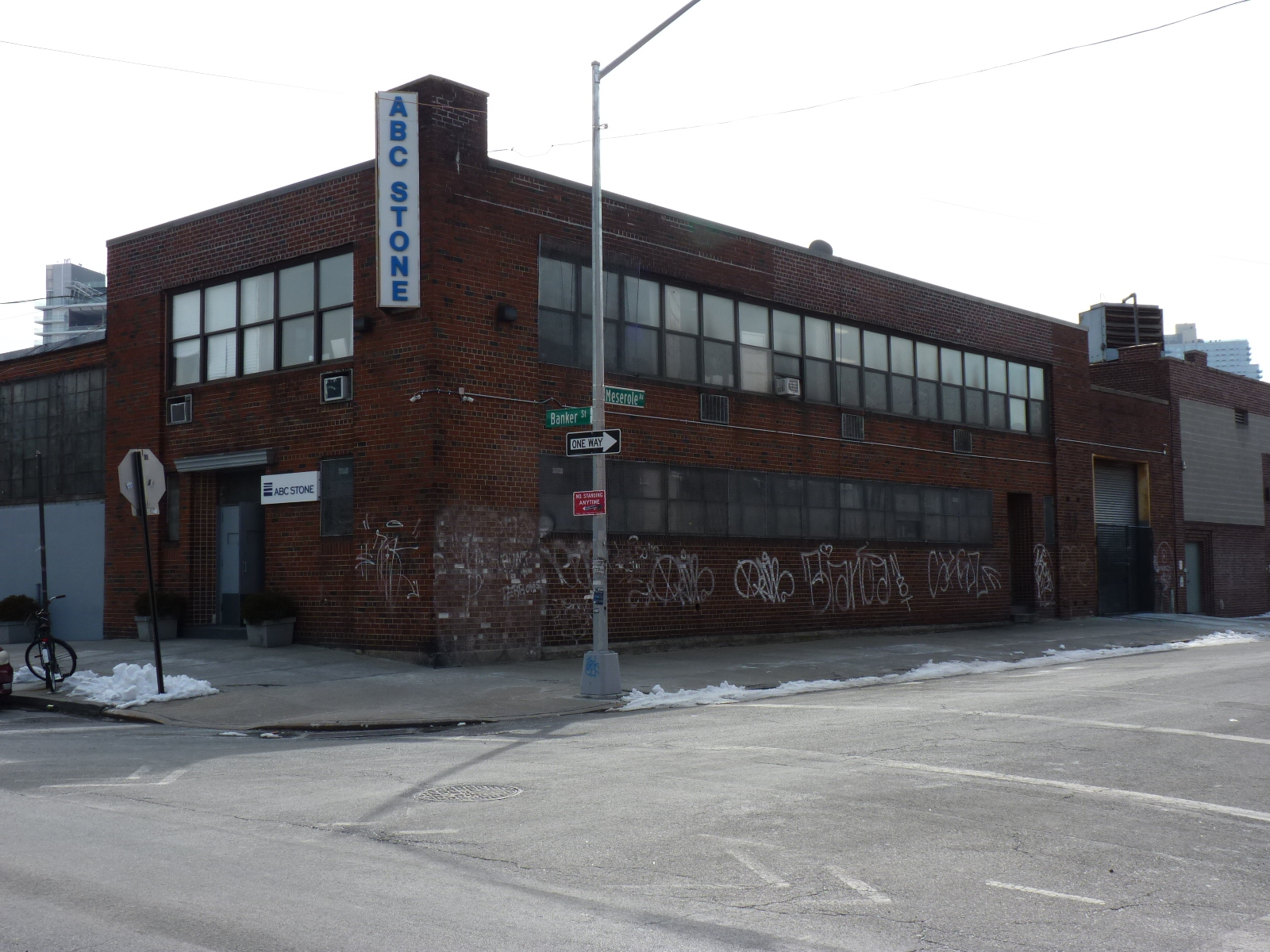
We are individuals and organizations who collectively have been representing, serving, assisting, or employing thousands of low-income families of color and minority- and women-owned businesses residing in Greenpoint, Bushwick, and Williamsburg well before these places were hashtags and hotspots; some of us also are loft tenants. As such, we oppose the bill being proposed in the state Legislature to amend New York’s Loft Law.
We have met with proponents of the bill and recognize the good faith, and human need, that motivates them to push for a measure addressing loft tenants’ concerns. But we feel compelled to raise concerns that the bill, pending before the Assembly and Senate in Albany, and specifically the Senate’s Committee on Housing, Construction, and Community Development, fails North Brooklyn on all fronts of housing, construction, and community development.
Even more concerning, the proposed bill undermines the longstanding goal of safe, decent, and fair housing in communities long needing such.
The bill harms communities long under siege in three ways.
First, in doubling down on the late Vito Lopez’s unprincipled concession of North Brooklyn’s Industrial Business Zone (IBZ) by allowing even more lofts within the IBZ, it threatens nearly 20,000 industrial and manufacturing jobs that pay North Brooklyn’s working, immigrant families double what retail, service-industry jobs do. As Dr. Martin Luther King’s Poor People’s Campaign reminds us, good paying jobs in the community are not merely an abstract economic issue; they are at the core of what fair housing laws are meant to secure. Such laws exist to ensure that historically ignored and marginalized communities have access to opportunities and resources – jobs, schools, healthcare, and prospects for social mobility – too often tied to zip codes.
Allowing for lofts in North Brooklyn’s manufacturing areas where there are currently good-paying jobs for residents – existing jobs, not those brought in by outsiders like Amazon – threatens employment that pays the rent; by that, they threaten long-term residents’ place in the greatest city of opportunity this country knows.
Second and more directly, the bill is a harbinger of further direct displacement, both in wholesale and retail, for a community already decimated by such. On the wholesale level, lofts change the character of manufacturing areas to residential, leading to an explosion in variance applications. That explosion, in turn, comes to justify zoning conversions for market-rate luxury housing.
This is a key mechanism through which communities of color, which cannot afford the new housing or the increased rents near it, get wiped out in the tide of gentrification. This is the precise pattern that led to the unsuccessful rezonings of the Greenpoint-Williamsburg waterfront (2005), Rheingold (2013), and Pfizer (2018), all separate episodes that contributed to a 30% decrease in people of color within our communities.
This wholesale pattern emerges out of the retail dynamic on the ground, where lofts, wholly unintended by their civic-minded occupants, become part of the market forces pushing low-income families of color out of communities. This is because lofts simply are not the same type of housing as the apartments in which North Brooklyn’s working families of color reside.
Constructed for transient populations, not long-term renter families, and characterized by very high turnover, loft tenancies often have higher rents at amounts unaffordable to North Brooklyn’s low-income families – whose median yearly income is approximately $55,000 for a household of four.
In the same way that unscrupulous landlords and developers prefer market-rate tenants to long-term rent-stabilized families of color, so too do they prefer higher paying loft tenants as a stepstone to the luxury market. This preference leads to all those deplorable tactics forcing out such families and small businesses, which we in North Brooklyn sadly experience every day. The recent New York City Council debates about tenant harassment have made the public aware of this dangerous dynamic.
Third, the proposed bill, in opening the door, for the first time ever, to residential lofts being built within the same structure as heavy manufacturing uses such as amusement facilities (think bowling alleys or batting cages), automobile service centers (think mechanics shops), and heavy industrial uses such as metal finishers and carpentry shops, seems to invite adverse effects and inequity.
The effects that lurk are in the obvious health and safety risks raised by having people live among such uses so incompatible with residential uses. Inequity is a threat because of the outcomes we have observed from these clashes in the past – it is the businesses employing local residents, many of color, who will be displaced to make way for folks who decided to insert themselves among factories with good jobs – are grossly unfair.
To be clear, we do not want loft occupants to be evicted and recognize that they too are opponents of developers, who force them out long-term. In fact, we along with the NYC Loft Tenants coalition stand together to highlight that any bill seeking reform of the city loft law needs to be comprehensive and address our mutual vision.
Such legislation must ensure that our community is protected from the forces of gentrification that lofts unleash and that our IBZ is treated like others, namely preserved to protect the manufacturing jobs that are so crucial to communities. If other IBZs are not part of the loft law, then ours shouldn’t be either, especially given that it is full of jobs that sustain low-income families in our neighborhoods.
We call on elected officials – especially the Chair of the Housing Committee Senator Brian Kavanagh and Senator Julia Salazar, both of whom represent North Brooklyn, to consider these aspects of the loft law question. More importantly, we call on them to engage the North Brooklyn community with town halls and public hearings to get more input and perspective on the important questions raised by the bill before killing good jobs and destroying what remains of working-class communities in North Brooklyn with bad legislation.
Unlike many areas throughout the city, in North Brooklyn the Loft Law bill raises important social equity questions; so, there must be a process to ensure these issues are discussed in an open forum with residents and workers. In a democratic system, working class communities of color majority voices should not be sidelined in favor of the interests of a minority – our legislative process must live up to its promise and include all voices within our community.
***
by Anne Guiney and Edwin Delgado on behalf of Bushwick Community Plan Steering Committee; Gregory Louis on behalf of Brooklyn Legal Services Corporation A; Alexandra Fennell on behalf of Churches United For Fair Housing (CUFFH); Leah Archibald on behalf of Evergreen Exchange; Jose Lopez on behalf of Make the Road New York; and Rolando Guzman on behalf of St. Nicks Alliance.
***
Have an op-ed idea or submission for Gotham Gazette? Email This email address is being protected from spambots. You need JavaScript enabled to view it.
Negotiation Lessons from the Amazon Deal Blow-Up
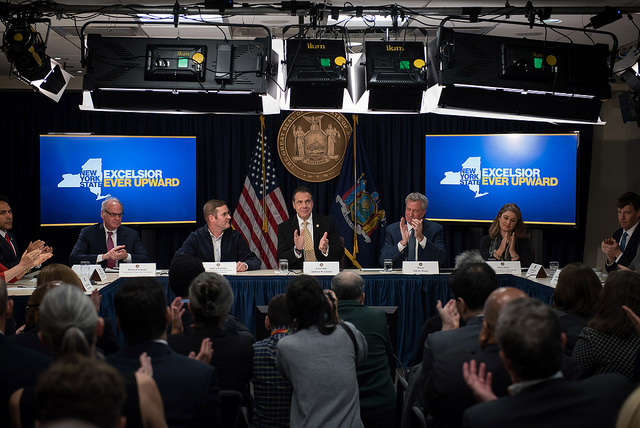
Announcing the Amazon deal (photo: Ed Reed/Mayoral Photography Office)
Amazon’s decision to abandon its planned construction of a major campus in Long Island City has revealed deep fissures among New Yorkers. Typical of news coverage and commentary in these highly-polarized times, discussion of the issue has been framed in largely win/lose terms, both from the perspective of politics (progressives versus pragmatics) and the impact on the New York economy and lifestyle (“more jobs is always better” versus “union-busting vulture capitalist billionaires don’t deserve tax breaks”). As with most stories framed in win/lose terms, the narrative unfolds with heroes, villains, victims, and victors.
Governor Cuomo has said he’s trying to revive the deal. In the context of future conversations between New York State and Amazon, as well as other companies, it is worth exploring some of the common and avoidable negotiation errors that were made the first time around.
First, don’t overestimate your leverage. Amazon’s process for selecting a city for its “second headquarters” seemed to be a picture of its leverage. It used something called a “modified auction,” whereby it set up an obnoxious beauty pageant where contestants could come forward with their goods and where the mega-company was at once judge, jury, and rule-maker.
City and state governments were invited to make their best offer to the behemoth, complete with outrageous tax incentives, promises of infrastructure improvements for Amazon’s benefit, and even pledges to re-name their city. Amazon then sat back, politely said, “Thanks for your entry” and narrowed the playing field to invite a second round of final “bids.” Only then did Amazon actually sit down for a real negotiation with a few finalists urging them to “sweeten the deal” even further before announcing the pageant winners.
On the surface, the process for Amazon sounds great, if you’re Amazon. But Amazon miscalculated the ill-will that the process itself would engender. First, pitting cities against each other, and then, once in New York, bypassing the local City Council’s approval process, had consequences. This was not a one-off auction for the sale of a Picasso at Sotheby’s. Instead, it was a process about who was going to be Amazon’s next-door neighbor, essential to its business, for the next ten, twenty, fifty years. Amazon’s approach galvanized opposition that might not have existed if it had not used such a power/leverage-based approach to the negotiation.
Second, don’t forget to manage your “behind-the-table” constituency. Many New Yorkers viewed it as nothing short of miraculous that Mayor Bill de Blasio and Governor Andrew Cuomo, two deeply competitive leaders, came together, joining forces to win Amazon and crush the competing offers. It was equally surprising how these two New York powerbrokers, finally united, could possibly lose the deal. Confident of their ability to deliver and caught-up in the competition between themselves and other bidders, the governor and mayor failed to deliver the “behind-the-table” constituencies on their own side who might seek to block or tank the deal.
Great negotiators are simultaneously negotiating across the table while artfully working to build and maintain supporting coalitions behind the table. They are always seeking to build deals that meet their own interests very well, the interests of the other side at least reasonably well, and the interests of third parties who may not be at the negotiating table but who may have interests in the outcome and power to tank the deal at least well enough to ensure the deal would be durable.
Despite its flaws, the city’s formal and cumbersome land use procedure -- which Amazon sought to avoid -- tends to afford that level of engagement to various groups, and to give them a space to challenge and refine a project rather than to tank it. It’s unclear whether the governor and mayor underestimated the organizing power or will of those who might be upset with the deal, or simply forgot this basic negotiation principle. But in failing to work constructively with various stakeholders who might not have had a seat at the negotiation table but who, when organized, had considerable power to stop the deal’s implementation, the negotiating parties unwittingly turned skeptics into spoilers.
Finally, define “success” based on your away-from-the-table alternative. On the one hand, Amazon’s sudden decision to pull out of the New York deal could be seen as victory for local Queens leaders who opposed it. And certainly, they celebrated its defeat and cheered the power of the people to “take their city back.”
At least in the short term, the leaders may have protected themselves among the most reliable Democratic primary electorate. But in negotiation, it’s important to measure “success” not based on the ephemeral, emotional feel of a “win” in the heat-of-battle, but rather based on whether what you are getting is better than what you are leaving behind. If a deal on the table advances your interests (broadly construed) better than no deal at all, then walking away from the deal is not a good outcome, even if it makes you feel good in the moment or if you believe it may help you in the next election.
In this case, the deal was far from perfect for New York or its workers. The city and state had offered $3 billion in tax and other incentives, plus a helipad, to a huge company whose owner is one of the richest men in the world and bypassed the City Council’s entire land use process while doing so. The company refused to provide guarantees around not opposing union organizing, and would have created a significant burden on local transportation, schooling, and other infrastructure.
Could a better deal have possibly been negotiated? Yes. However, it is also the case that the deal that was negotiated would have likely brought in $27.5 billion in tax revenue to New York over 25 years and approximately 25,000 new jobs in the first ten years alone. Of course, these are estimates, but even if they are remotely accurate, the upsides of this deal seem to outweigh no deal by a wide margin, especially since there is no immediate back-up plan to generate revenue or jobs at anywhere near this scale.
While it is clear that individual elected officials believed there was significant political upside to derailing the deal, it’s hard to see how Amazon’s abrupt withdrawal is a win for the people of New York, at least vis-à-vis the no-deal alternative. And yet, parties often reject deals that are better than their no-deal alternative because they allow emotions to escalate, and do not measure success in relation to what no deal would get them.
Not all negotiation errors are avoidable. But these were. When leaders focus on leverage, ignore the creation of possible blocking coalitions, and let emotions get the best of them, even seasoned and sophisticated negotiators will end up with less-than-optimal outcomes. Because the entities in play are one of the world’s greatest cities and one of the most prosperous and growing companies in the world, all involved will survive, even thrive, over time. But from a negotiation perspective, it’s hard for us to look at the outcome as anything but a loss and a missed opportunity for all.
***
Robert C. Bordone is the Thaddeus R. Beal Clinical Professor of Law at Harvard Law School, and Daniel R. Garodnick is a former New York City Council member, where he chaired the Economic Development Committee. On Twitter @bobbordone & @DanGarodnick.
***
Have an op-ed idea or submission for Gotham Gazette? Email This email address is being protected from spambots. You need JavaScript enabled to view it.
How to Expand Opportunity in Construction for Those Left Behind
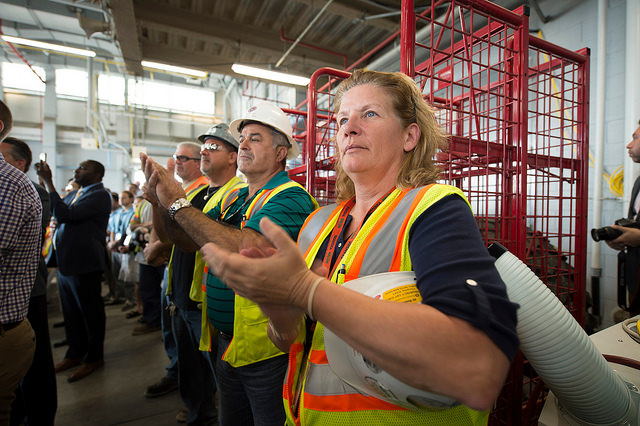
(photo: governor's office)
A lot has been made of the disagreement between open shop contractors and union trades over decisions by owners of private projects to supplement select trades. But where others get lost in conflict, I see opportunity.
In many cases, open shop labor, machine operation, and some carpentry services are integrated to perform certain work, including safety and general condition services. But for many owners and construction managers, the reality is that most of the work on open shop projects is actually performed by union trades – and that is a problem. We have seen certain "progressive" trades using work rules and wage concessions to their benefit. As a result, these trades often have an advantage in being awarded construction contracts. And in this one-sided system, certain unions have been able to maintain and in some cases expand their market share.
Despite the odds stacked against us, open shop companies have been able to preserve a competitive advantage in a small number of trades, including labor, where the cost of doing business with a union shop is double. Due to issues including multi-trade and minimum manning requirements, union companies charge a whopping 20% more for services such as superstructure concrete. And to that end, broad-banding -- a classification system based on certifications and skill levels -- has made open shop contractors more competitive, while giving their employees an opportunity to learn a wide range of skills.
While the rules are written to work against the open shop model, the current construction landscape provides a substantial opportunity for open shop workers should industry and government choose to realize it.
For one, the construction trades and government must start working together to provide and promote extensive safety and trade training -- to increase the technical capacity of the open shop workers. Partnering with community-based organizations will not only provide a trained workforce but a recruitment tool that is ready to provide a steady stream of good-paying jobs to a city-dwelling and diverse population in an industry that desperately needs it.
With a labor market in desperate need of skills training, it’s time for our partners in government to protect their constituents by fostering growth of the market, providing the right environment for open shop contractors to develop career ladders for their employees, and promoting open shop apprenticeship programs through the removal of roadblocks and red tape. This call to action doesn’t apply to laborers alone -- once these individuals complete their apprenticeships, basic labor tradesmen can be offered a path to train in the technical trades, for example as plumbers or electricians. By building on their pre-existing knowledge of construction and the construction process, skilled workers will have more opportunity to succeed in a wide array of trades.
Moreover, living wage and basic benefit programs must continue to be improved to ensure that workers are paid equitably, while “second chance” programs should be expanded and made accessible to ensure that when an individual has repaid their debt to society, they’re able to get back on their feet in an industry that offers them a path to employment instead of incarceration.
We’ve all heard the term “pale, male, and stale,” and the construction industry has a long way to go before we can shake that label, which is why a focus on diversity will be critical to the industry going forward. Our workforce should be every bit as diverse as the communities we serve.
It’s past time that we as an industry seize this opportunity. The construction industry has historically been the economic sector to narrow wage disparity and give immigrant and forgotten Americans an opportunity to seize the American dream. Let’s work together and continue to give all our workers the ability to reach it.
***
Ron Lattanzio is President of TradeOff Construction Services.
***
Have an op-ed idea or submission for Gotham Gazette? Email This email address is being protected from spambots. You need JavaScript enabled to view it.
The Aftermath of the Public Advocate Race
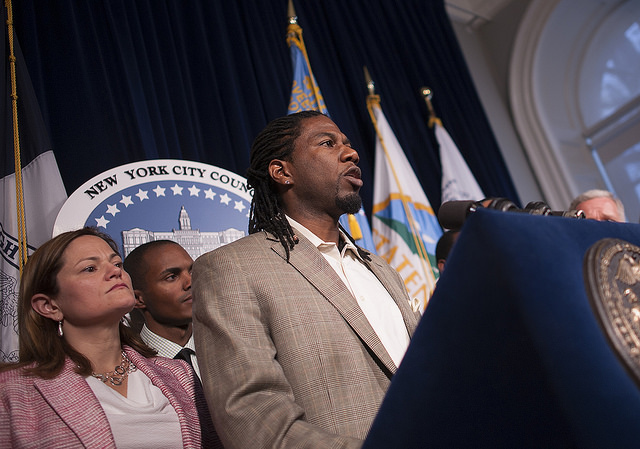
Melissa Mark-Viverito & Jumaane Williams (photo: William Alatriste/City Council)
The public advocate special election has come and gone. The implications of the results will be felt for years to come. Yet there is a debate over whether the position of public advocate should even exist. But it is here and the last two to hold the position—Bill de Blasio and Letitia James—have moved on to higher office.
The Candidates
Jumaane Williams, the winner of the race with 33% of the vote in a very crowded field and now the third African-American to hold citywide office in New York City, will surely be mentioned as a mayoral candidate in the future. Williams, perhaps contrary to popular expectation, was dominant in a diverse set of communities in the city—from central Brooklyn to the Upper West Side, northern Bronx to the Lower East Side.
The following map, created by Steven Romalewski of CUNY Graduate Center’s Mapping Service, vividly captures the results of the citywide race, showing Williams’ geographically- and numerically-wide victory:
The breadth and depth of his victory was surprising. Many, including me, assumed that Melissa Mark-Viverito, a Latina, would run a more formidable race. Conventional wisdom held that along with Williams (who ran for lieutenant governor last fall), she would enter the race with the highest name recognition, after serving as speaker of the City Council for four years and thus appearing often on newspaper pages and TV networks throughout the city. Instead, Mark-Viverito took a very distant third place, with only 11% of the overall vote.
Mark-Viverito’s electoral performance was so weak that she won her home Assembly district (the 68th district in East Harlem) by only 216 votes over Williams. By comparison, Williams defeated his next closest opponent by over 3,000 votes in his own Brooklyn Assembly district. Assemblymember Michael Blake won his home borough of the Bronx and in his home district defeated his closest opponent by over 1,000 votes.
This does not mean that Mark-Viverito has taken herself out of contention for future races. But she has much work to do to improve name recognition and to make a more compelling case for being elected to higher office.
The Votes
In my last column, I noted that 67% of the runoff election for this seat back in 2013 came from Manhattan and Brooklyn. I figured that in this shortened special election, these two boroughs would continue to play an outsized role. Manhattan and Brooklyn duly accounted for 60% of the overall voter turnout. And it was in these two boroughs that Williams vastly outperformed his competitors.
In that same column I pondered the potential role that outside groups and labor could play. I believe it was the endorsement of The New York Times, an entity I did not mention in that piece, that cemented an already strong campaign by Williams as outside groups and labor mostly remained on the sidelines.
The Black and Latino Vote
While it will be at least another month before we have the full data on who actually came out to vote, we have some hints about the Latino and black communities: that districts with over 55% of black voters comprised 22% of the overall vote; that districts with over 55% of Latino voters comprised about 10%; and that together black and Latino voters appear to have constituted almost a third of the overall vote.
As we explore the dynamics of the black and Latino vote in this special election, it is noteworthy that the depth of Williams’ victory extended to some key Latino districts, where it may have been expected that Mark-Viverito would dominate. Surely, having Ydanis Rodriguez and Rafael Espinal in the race did not help her cause to win the lion’s share of the Latino vote. But Williams’ performance is striking in places like Washington Heights, where he came within 16 votes of Mark-Viverito’s second place finish (Rodriguez won this, his home district).
In Bushwick, East New York, and parts of Williamsburg, where Latino voters still outnumber other groups, Williams handily beat Mark-Viverito and Espinal. These were all areas in which Mark-Viverito needed to pull out strong Latino numbers. But she failed to do so.
The Latino vote was particularly low overall. And that is troubling. During the previous municipal general elections, in 2017, Latinos made up roughly 18% of the overall vote (blacks comprised 30% of the vote). This past November, Latino turnout citywide increased by 3%. But in my estimation, in this special election Latinos barely reached the 10% mark. Though we will not have the full picture for a while, clearly plenty of work remains to be done to increase voter participation in Latino communities.
And as Latino leaders gather in Albany this weekend for the annual Somos legislative conference, I would hope that they brainstorm strategies to increase Latino voter participation.
All in all, and the public advocate special election notwithstanding, in years to come Latinos and black voters will continue to gain influence as crucial voting blocs in New York City. Given their potential voting power, the task is making sure they turn out to vote.
***
Eli Valentin teaches political science at Monroe College and is a frequent guest political analyst on Univision NY. On Twitter @EliValentinNY.
***
Have an op-ed idea or submission for Gotham Gazette? Email This email address is being protected from spambots. You need JavaScript enabled to view it.
The Threat to Byford’s Fast Forward and Other Major Flaws in Cuomo-De Blasio MTA ‘Reform’ Plan
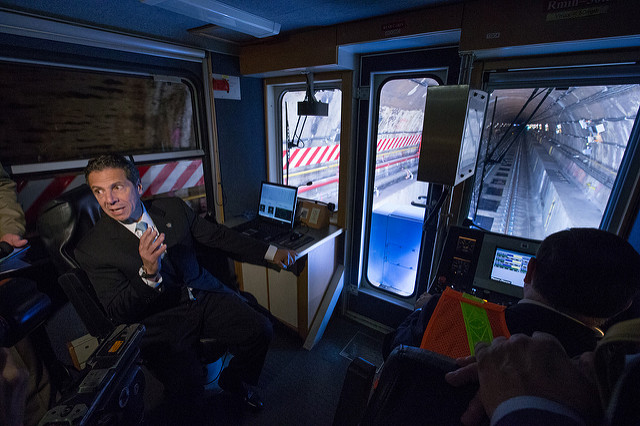
(photo: governor's office)
My organization, Reinvent Albany, strongly supports congestion pricing and new revenue for the MTA, but we believe the MTA’s biggest organizational problem is the Governor’s endless political meddling and sidelining of the MTA’s and New York City Transit’s (NYCT) professional staff.
We hope the hastily contrived MTA restructuring recently presented by Governor Andrew Cuomo and Mayor Bill de Blasio in their “10-Point Plan to Transform and Fund the MTA” withers under public scrutiny and is rejected by the State Legislature and key county stakeholders in the MTA region. This is not real reform: it is a counter-productive distraction that continues the politicization of the MTA, and even codifies it.
Transit riders and those interested in a functioning system should stay focused on the 2016 pledge of Governor Cuomo and the Legislature to give the MTA 2015-2019 Capital Plan $8.3B, with $1B appropriated upfront. The governor and Legislature still owe $7.3B. Where is this money? To date, the MTA has received only $805 million from the state in cash it can actually spend on the current plan. We are especially concerned Governor Cuomo is about to renege on his $8.3B pledge because new revenue from congestion pricing will go to the next MTA capital plan – the 2020-2024 plan.
Reinvent Albany strongly supports congestion pricing for the Manhattan Central Business District and we thought Sam Schwartz’s Move New York plan was a masterpiece of public policy, but we have numerous concerns about the new 10-point plan from the governor and the mayor. Here are five big ones:
First, highly-respected NYCT President Andy Byford is stripped of power (Item #1). The governor’s proposed reorganization takes away a huge amount of fundamental management authority from New York City Transit President Andy Byford and shifts it to MTA Headquarters (HQ). We wonder what happens with Byford’s Fast Forward Plan if he can’t implement it? The governor proposes shifting engineering, contracting and construction management to MTA HQ. Why? NYCT just hired Pete Tomlin, an internationally respected expert, to lead NYCT in modernizing the subway signals, a cornerstone of Byford’s plan. What happens to this hire? MTA HQ has completely mismanaged the East Side Access project with up to $7B in cost overruns.
Second, the Cuomo plan creates new loopholes in the congestion pricing plan by creating vague exceptions for motorists (Item #2). Given the disastrous experience with state and New York City issued parking placards, the public should be concerned about the potential of these loopholes to be abused by politically powerful groups.
Third, what happens to the MTA if inflation is higher than 2%? (Item #3). A two-percent hard cap on MTA fare and toll hikes makes no sense. More reasonable would be to index to inflation, since inflation has historically regularly exceeded 2%.
Fourth, the proposed Regional Transit Committee duplicates and subtracts from the MTA Board’s authority and will create even more confusion (Item #7). If the Legislature wants representation on the MTA board or changes to the board, it should make them instead of creating a confusing mess that further reduces accountability. Moody’s – one of the MTA’s credit raters, which typically issues muted statements – even said that the this plan “will not necessarily reduce the management complexity that has complicated fare increases and capital program approval.” The MTA board should determine fares, tolls, and budgets, etc. If it does it poorly, reform it.
Fifth, the MTA, like other state authorities and agencies, should be run by professionals, not overseen by arbitrarily selected academics hand-picked by the governor (Item #8). There are many people in the world with more far more expertise in transit engineering and technology than the deans of Columbia and Cornell engineering schools – including within the MTA, like NYCT’s new hire, Pete Tomlin. Why should these informal advisors to the governor determine what kind of signals technology the MTA uses?
This is not the time to make major changes to redistribute power over the MTA’s governance structure, as there are too many stakeholders at risk. Changes to the governance of the MTA should be made independently of the budget after full and thorough discussion by MTA stakeholders and the public - something that we can truly call reform.
***
Rachael Fauss is Senior Policy Analyst at Reinvent Albany. On Twitter @RachaelFauss & @ReinventAlbany.
***
Have an op-ed idea or submission for Gotham Gazette? Email This email address is being protected from spambots. You need JavaScript enabled to view it.
Amazon Was Never Going to Create 25,000 Jobs in Queens
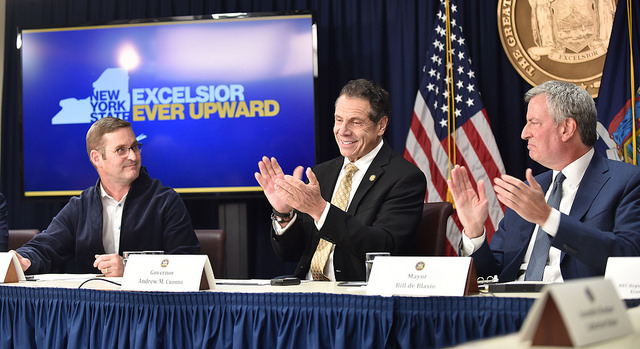
(photo: Kevin P. Coughlin/Office of Governor Andrew M. Cuomo)
Now that Governor Amazon Cuomo is grovelling for Amazon to come back to New York, it’s important to remember that the original sin of the “HQ2” deal is still true: Amazon was never going to bring 25,000 jobs to Long Island City.
That might surprise people, particularly since that number and its related economic activity have been the central arguments used to defend the deal. But to be clear, Amazon never actually promised to bring 25,000 jobs. Period. Go look for it.
Supporters point out that Amazon would get the full package of tax incentives, which are available to any company, only if it created the 25,000 jobs. That's absolutely true, but it proves the point. It shows that Amazon didn't need or really want the job incentives. Instead, it played off our failed economic development policies to get what it actually wanted.
What Amazon did care about, what it wanted more than anything, and what it would have gotten in the deal was a shiny new East River campus quickly, quietly, and cheaply.
First, Amazon didn't want to engage with the community or be a good neighbor. All of this would have taken a lot of time, but the real issue was that it would have involved making promises to the community that Amazon had no intention of ever making. The minimal promises it did make were entirely on its terms (and changed only slightly after pushback before Amazon finally walked).
Second, Amazon didn't want to pay the full cost of acquiring the choice land that it wanted to build its campus or go through the city’s land use review process (ULURP). That would have involved stringing together multiple lots at fair market value and convincing the city to sell public land. That would have meant more engagement with the public (and the City Council) and more commitments.
Third, Amazon knew it had to hire union labor for constructing and servicing the campus, but didn’t want to pay for it. More importantly, it didn’t want that to be a backdoor to unionizing its own larger workforce, especially in distribution centers. As much as some supporters have pointed to the construction and building-service jobs as evidence that Amazon was willing to work with unions, it was a political necessity to do so and had the added bonus of splitting the labor movement in New York. Amazon was never going to allow unionization in its Staten Island or other distribution centers as part of the deal.
By “promising” 25,000 jobs, Amazon got everything it wanted in the Memorandum of Understanding with the city and the state. It bypassed the City Council and real public review when the governor deemed “HQ2” a General Project Plan. It got its riverside campus when the mayor effectively turned over public land on a sweetheart lease (unquestionably saving Amazon hundreds of millions of dollars that weren’t and haven’t been included in the cost of incentives) while also killing a private development that included affordable housing and was going through the proper land-use channels. And Amazon got a flat out cash transfer of $325 million (with a possibility of up to $500 million) to cover costs of using union labor on construction.
Still, Amazon never had to deliver the jobs. To be sure, it was going to have a large workforce in Long Island City by consolidating several thousand employees already in New York and transferring more from Seattle. There is also no doubt that it would have hired some new employees locally. But there were no real promises of how many, at what salary, or from what communities. That just means we were going to give a competitive edge to Amazon by subsidizing an abstract total of jobs at a time when job growth is fine in the city.
As we've seen with Foxconn in Wisconsin, General Electric in Massachusetts, and just about every development project Governor Cuomo has produced (and his Economic Development Corporation has justified), the promised jobs and economic activity from these incentives rarely materialize, whether the companies get all of them or not. However, the public is always on the hook and companies almost never are.
Amazon exploits these policies all the time with its distribution centers (see Florida, Texas, California). They promise direct and indirect job creation that never happens. Amazon knew it wasn’t going to deliver 25,000 jobs and would never be held accountable for failing to. Amazon wanted its New York campus and simply took the flawed logic of our economic development policies to their extreme to get it.
Let’s not forget the bad faith Amazon showed when it originally announced the "contest" in September 2017. Remember, back then it wasn’t for 25,000 jobs -- it was for 50,000 jobs. Amazon and the media moved on quickly from that bait and switch, but we shouldn’t.
Amazon prides itself on being data-driven and strategic (yet: counterpoint), which means it’s safe to assume that the D.C. area and New York City had already been selected - making the whole idea of a “second headquarters” bogus from the beginning.
But why not announce a “contest” saying you’re going to create 50,000 jobs and have every city and state fall over themselves to compete for it? Amazon got a year’s worth of free advertising. It got reams of data from cities for future expansion and whatever else it may attempt. It forced New York and Virginia to offer billions for something it was already going to do and could easily afford.
Most importantly, Amazon got New York and Virgina to turn over land for campuses quickly and with no public review.
Back in December, I wrote about how I thought the Amazon deal was in trouble. Then, as now, it was clear that the deal was negotiated in bad faith from the beginning, that it would not actually do what the mayor, the governor, and Amazon said it would do, and it would not hold Amazon accountable for when it inevitably failed to live up to its vague end of the bargain. That is all still true.
Amazon is incapable of being a good partner. Everybody knows that now. Everybody knows how it treats its workers, its home city, and who it does business for. If it really needed a home for 25,000 jobs in New York City, it would have negotiated in good faith and worked through the concerns of the community it was moving into.
Instead, it wanted an insulated campus apart from the community paid for by the community, and bailed when it wasn’t served on a platter. Activists and a few steadfast local politicians accomplished a great public service by showing the real face of Amazon.
More importantly, the “HQ2” ordeal shows the fatal flaws in our economic development policies that Amazon so cleverly exploited. Taxpayers spend $90 billion a year pitting cities against each other for unsubstantiated job numbers, which only works out for corporations and their shareholders.
This is done instead of solving the cities’ actual problems like the lack of affordable housing, overcrowded schools, a crumbling transportation system, and skyrocketing child- and health-care costs. It goes without saying that investing in this public infrastructure would also lead to new, bottom-up job creation -- many more than 25,000 -- for all kinds of New Yorkers, new residents, and new businesses.
As his recent grovelling has proven, Governor Amazon Cuomo has been guilty of this more than anyone. He values the optics of a ribbon-cutting ceremony on the East River with Jeff Bezos over the hard work that it takes to create actual jobs. Let’s hope Amazon’s bad faith trumps the governor’s and they stay gone.
***
Peter Harrison is a member of NYC-DSA and CEO/Co-founder of homeBody, a public benefit startup. On Twitter @PeteHarrisonNYC.
***
Have an op-ed idea or submission for Gotham Gazette? Email This email address is being protected from spambots. You need JavaScript enabled to view it.
